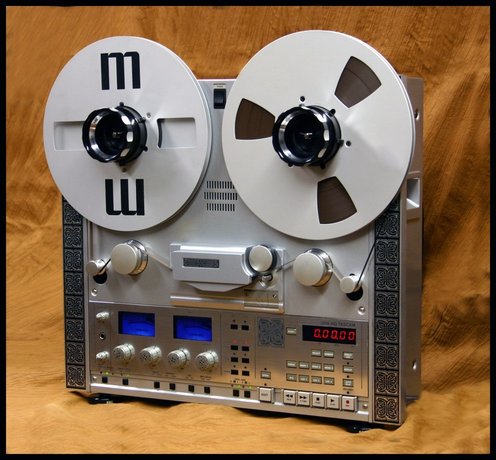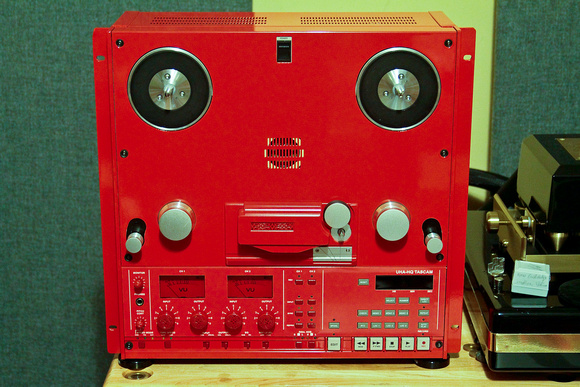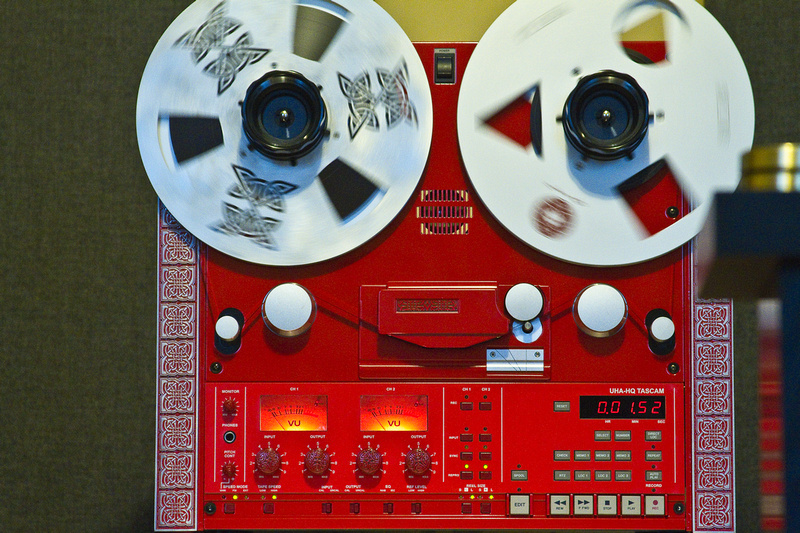The Absolute Sound Blog: “The Ultimate Source Component”
Plus the newest blog from January 2013!
United Home Audio’s New Tape Deck and Next-Gen Reel-to-Reel Tapes
“11”
by Jonathan Valin | Jan 23rd, 2013
Read it all here!
The Absolute Sound Blog on the UHA Phase11 Tape Deck

But let’s face it: While I know the music of Penderecki and am very familiar with the sound of violin, viola, and cello, I don’t know this particular (and quite wonderful) piece. Wowed as I was (and I was) by the Phase 11/Yarlung, what would happen, I wondered, if I heard a piece of music I was extremely familiar with in countless iterations on vinyl and digital? You know, something like the album that changed my farchachdat life farchachdat ever. Something like, oh, Sgt. Pepper?
Of all the gin joints, in all the towns, in all the world, what, I ask you, are the chances of a mastertape (well, a second-gen dub) of Sgt. Pepper walking into mine? And yet that is exactly what happened. Thanks to Greg Beron and Bruce Brown of Puget Sound Studios (http://pugetsoundstudios.com), who does all the high-res mastering for Music Direct (as well as all the mastering for Dave Wilson and Peter McGrath, among many other notables) and occasionally loans 15ips, two-track, reel-to-reel dupes of safety masters to vendors for shows and to reviewers for audition (alas, they are not for sale), I got to hear the impossible. I got to hear the mastertape of Sgt. Pepper!
I want to be very clear here, because, truthfully, I would’ve swooned if the mastertape of Sgt. Pepper had sounded terrible. Which, BTW, is pretty much the way the album (in stereo) has always sounded, no matter whose version you’re talking about. Anemic in the bass, dry and brittle and bath-tubey in the mids, crudely mixed (very left/right) with obvious manifold overdubs. Oh, there are some variations from cut to cut, but for the most part Sgt. Pepper didn’t make it to Number One on Rolling Stone’s list of the 100 Best Rock Albums of All Time—or Number One, with a dagger, in my heart—because of its audiophile-grade sound.
But the sound wasn’t awful. It was anything but awful.
If you think The Beatles couldn’t rock, I truly wish you had the same chance that I had—to hear this mastertape on this stereo via Greg’s Phase 11 machine.
Folks, to say that this was a “better” sound, even “an extraordinarily better” sound, doesn’t cut it. This was a revolution.
I don’t know where to begin; the net effect was so overwhelming. Of course, the bass is the weakest thing on vinyl and digital. You hardly even know Paul is playing, much less rocking. But on the mastertape…on the mastertape, boys, it is an entirely different story. Here is Paul’s bass guitar the way you’ve always wanted to hear it—full, deep, incredibly powerful, and so clear and defined in pitch and articulation that it is easy to tell the McCartney was a heckuva player. Same for Ringo’s drum licks—some of which, like the bass, almost literally knock you on your ass with their slam—same with George’s garden of guitars. And the voices! It was like having John Lennon and Paul McCartney in my room with me. It goes without saying that there wasn’t a single cut that didn’t hold surprises in store—things I’d never heard and I’ve heard this album countless times.
Given the importance Sgt. Pepper has had in my life, the whole thing was so amazing it left me agog. I have never heard rock and roll reproduced more powerfully and realistically in my home or at a show in my entire life. And, guess what, it was just the start. Because thanks to Greg and Bruce I also got to hear a mastertape of the anti-Beatles, The Doors, performing “Crawlin’ King Snake” and that creepy “Hyacinth House” from L.A. Woman. When black bluesmen, like John Lee Hooker, sing “Crawlin’ King Snake” or “Back Door Man” the humor comes from the disparity between the “innocent” text and the sexual subtext. When The Doors’ Jim Morrison sings them, there is no subtext—and no humor. There was a reason why they called this guy “The Lizard King.”
There is so much more that I would like to say about what amounts to the most incredible stereo experience I’ve had since first hearing those Maggie I-Us with Audio Research electronics. But I’ve got to save something for the magazine, where I will do a review and a title by title discography of some of the great new reel-to-reel releases I mentioned.
For those of you interested, the UHA-HQ Phase 11 tape deck comes in two versions: one with a full-blown, Herculean-effort playback setup but with stock recording heads and EQ for $17k; and another with a full-blown Herculean effort on both the playback and the recording side for $21k. Compared to what a great turntable would cost you, this is a bargain. And compared to a couple of years ago, the number and quality of newly available 15ips, two-track, reel-to-reel titles may justify the purchase. It certainly has rocked my world.

Well, now, looky here what Jonny’s got!
Yup. The very item I (and a lot of other folks) called the best source component at RMAF (and would’ve named the best source component at CES, if we’d given an award for best source component at CES)–United Home Audio’s cherry-red UHA-HQ Tascam 15 ips, two-track, analog tape deck–is now sitting right next to the best source component I’ve (yet) heard in my system, the Walker Proscenium Black Diamond Mk II record player.
It’s been a long, long, long time since TAS reviewed a reel-to-reel tape deck, and I’m not sure we’ve ever reviewed 15 ips, two-track, first-generation dubs of gen-u-ine mastertapes. But thanks to Greg Beron of United Home Audio, Carl Marchisotta of Nola Speakers, and Paul Stubblebine of The Tape Project that is about to change.
You can read about UHA’s fabulous tape machines at www.unitedhomeproducts.com/reel_to_reel_hq_tape_decks.htm. (The one I’ve got is a “Level 5” deck, I think.) And you can read all about The Tape Project’s fabulous catalog of 15 ips. two-track, reel-to-reel first-generation dubs of mastertapes–which includes little numbers like Bill Evans’ Waltz for Debby, Sonny Rollins’ Saxophone Colossus, Thelonius Monk’s Brilliant Corners, Linda Rondstadt’s Heart Like a Wheel, The Band’s Stage Fright, David Oistrakh (with Horenstein and the LSO) performing the Hindemith Violin Concerto, and Reference Recordings’ Nojima Plays Lizst, among other heavyweights–at www.tapeproject.com/catalog/catalog.htm.
It’s almost too much for a poor boy to handle!
Greg will be arriving this Friday to give me a refresher course on tape recorders and tape recordings. Several of The Tape Project tapes should arrive on Thursday, with more slated for the coming months. As soon as I can I will post a picture of the Tascam lit up and in action. And as soon as I am able I’ll begin to blog in detail about the Tascam, how to use it, and how it sounds. Until then, I’ll just be sitting in front of it, drooling.
We all like talking about the sound of mastertapes–and guessing about how closer our systems take us via records and CDs and SACDs to their sound. Now, finally, after forty years of guessing, I will be in a position to actually tell you (and tell myself) if Turntable A or CD Player B is, indeed, coming closer to the sound of the mastertape! What an extraordinary treat!


